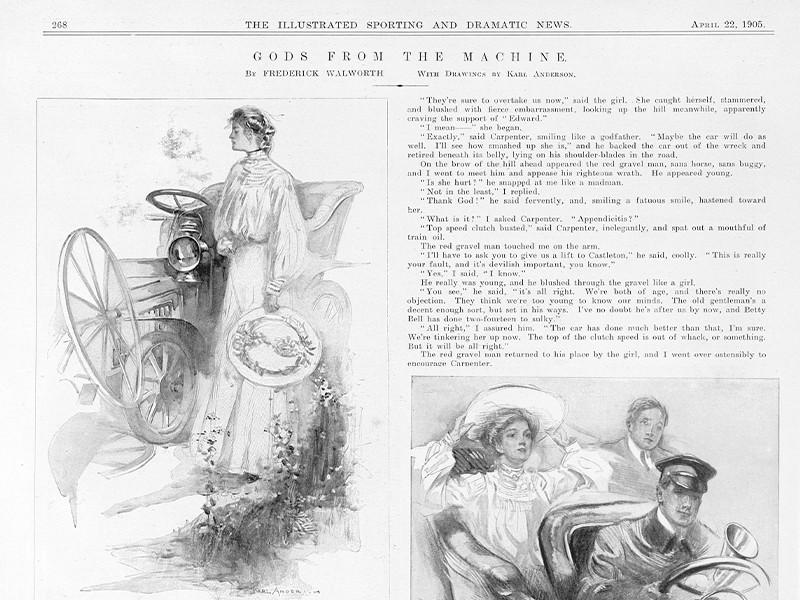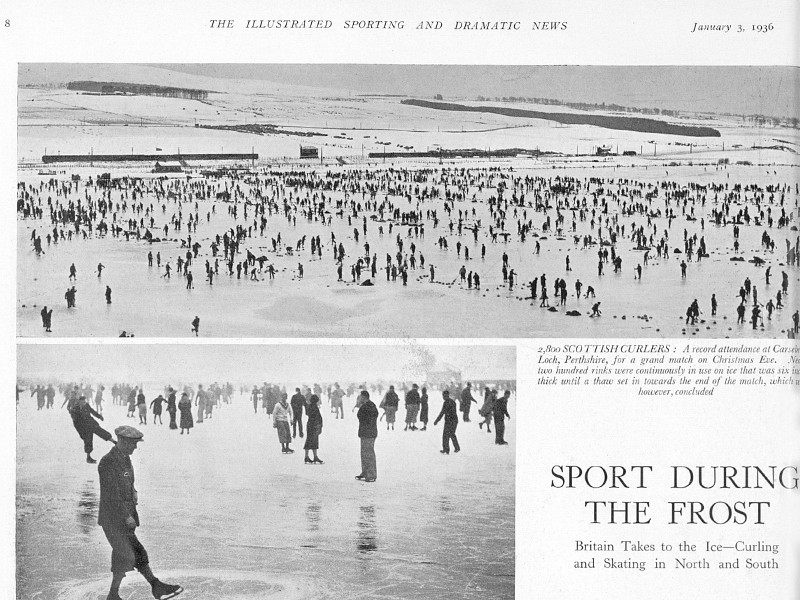
The Illustrated Sporting and Dramatic News, 1874–1970

We trust always to be on the side of Art, whether its exemplar be the humblest supernumerary or the most distinguished "star."' (The Illustrated Sporting and Dramatic News, 2 February, 1874).
The history of societies is reflected more vividly in the way they spend their leisure than in their politics or their work.Historian
Access the full collection
Access the full archive of The Illustrated Sporting and Dramatic News, 1874–1970.
Institutional Free Trial
Start your free trialRegister for a free 30-day trial of The Illustrated Sporting and Dramatic News, 1874–1970, for your institution.
Institutional Sales
Visit Sales PagesellFor more information on institutional access, visit our sales page.
Already have a license? Sign in.
Nearly 100 years of sports, art, leisure, and country living

After its establishment in 1874, The Illustrated Sporting and Dramatic News became one of several “sister” publications to The Illustrated London News (ILN). Known as Sport and Country from 1943, and Farm and Country from 1957 until the release of its last issue in 1970, this magazine concentrated on sports, hunting, and agriculture. Though it developed a particularly strong focus on farming, it also printed articles on theatre, literature, and music, with contributions from some of the country’s most prominent writers and artists. Boasting nearly 223,000 images from more than 4,200 issues (dated between February 1874 and December 1970), the magazine constitutes the second-largest collection in British Illustrated Periodicals, 1869-1970.
For almost a century, The Illustrated Sporting and Dramatic News reported on sports, rural life, and the leisure activities of Britain’s landowning classes. For example, it featured articles on foxhunting, shooting, polo, yachting, and golf, as well as the annual Oxford-Cambridge boat race. It also provided readers with frequent updates from the world of horse racing, including events at Royal Ascot and the Epsom Derby. However, over time, its coverage evolved significantly: whilst earlier issues printed and discussed work by celebrated authors such as Bram Stoker and distinguished playwrights such as Noel Coward, later editions highlighted the gradual modernisation of farming, and the development of new agricultural machinery and digital technology. Due to both its eclectic coverage and longevity, The Illustrated Sporting and Dramatic News provides key material for students and researchers of the history of sport, the history of Britain’s countryside, and the history of science and technology.
Contents
The Illustrated Sporting and Dramatic News, 1874–1970...
We trust always to be on the side of Art, whether its exemplar be the humblest supernumerary or the most distinguished "star."' (The Illustrated Sporting and Dramatic News, 2 February, 1874).
Discover
Highlights

Licensed to access "The Olympic Games"
18th July 1908:
In 1908, London hosted the Olympics for the first time, and this proved a major turning point in British press interest in the Games. This piece (image 7) highlights the detailed coverage of events such as cycling and athletics, accompanied by high-quality photographs.
Insights
As its original title suggests, The Illustrated Sporting and Dramatic News reported on some of the most dramatic sporting events of the last century, often accompanied by high-quality photographs and illustrations. For example, in 1948, the publication (then known as Sport and Country) covered the Australian cricket team’s famous “Invincibles” tour of England. Captained by Donald Bradman (widely regarded as the greatest cricketer of all time, then in his final international series), they remain the only men’s Test side to have completed an English tour unbeaten.
Though, in its later years, the publication focused its attention primarily on the world of agriculture, earlier issues provide key insights into Britain’s burgeoning arts scene. For example, at the turn of the twentieth century, The Illustrated Sporting and Dramatic News printed commentary on the latest furniture designs to come out of the Arts and Crafts movement; the finest works on display at the Royal Society of Painters in Water-colours; and recent productions of Shakespeare at London’s Shaftesbury Theatre.
Louis Wain – a pioneering artist, celebrated for his psychedelic depictions of cats – started his career illustrating animals at country shows, and producing pet-portraits for wealthy clients. Notably, he contributed artwork to The Illustrated Sporting and Dramatic News for several years during the 1880s, before beginning his long association with The Illustrated London News.
Due to its longevity, The Illustrated Sporting and Dramatic News reflects some of the most significant changes that occurred within British society over the past two centuries. In particular, the periodical highlights the increasing use of technology in everyday life, depicting the British public’s response to the introduction of the motorcar and, by the 1960s, the incorporation of computers into workplaces.
Whilst its coverage mainly reflected the experiences of Britain’s landowning classes (and, by implication, was oriented towards conservative readers), the publication does reveal the gradual evolution of social attitudes over time. Specifically, The Illustrated Sporting and Dramatic News frequently reported on the achievements of female athletes, with a particular emphasis on the latest developments in women’s golf and football.
Unlock Historical Research for Your Institution
Provide your students and researchers with direct access to unique primary sources.
Related Media


The portrayal of the 1908 Olympic Games in The Illustrated Sporting and Dramatic News Contextual Essays

Guide to British Illustrated Periodicals, 1869–1970 Contextual Essays

Talking History: Britain and the Birth of Modern Sport | S1, Ep 4 Podcasts









.svg)



